The Garrett Farm-Shooting of John Wilkes Booth
Introduction
Text-to-speech Audio
Images
Landmark about the Garrett Farm located along U.S. Route 301
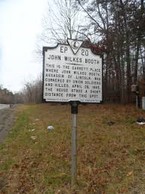
Garrett House
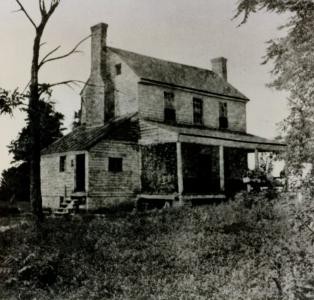
Period time sketch of Booth dying on the Garrett's porch
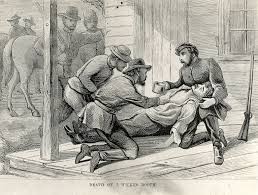
Period time print depicting Boston Corbett firing Booth who was inside the burning barn.
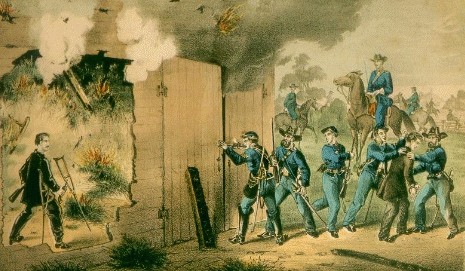
The guns found on and near Booth while in the barn
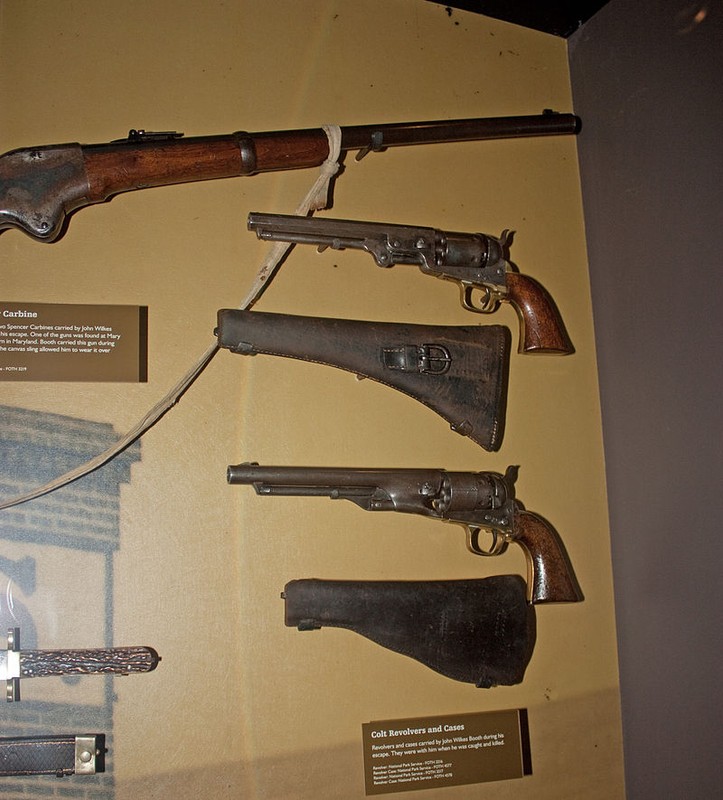
Map showing the route of his escape and eventual demise
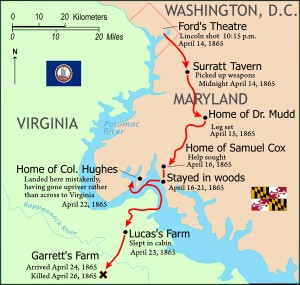
Famous photo of Booth
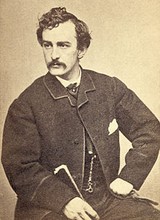
Garrett home porch in 1865
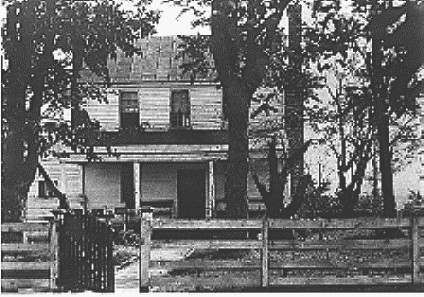
Backstory and Context
Text-to-speech Audio
After shooting Lincoln on April 14, 1865, Booth fled Washington D.C., into Maryland and then Virginia, resting at the Garrett Farm close to Port Royal Virginia.1 Booth decided to take refuge here after a number of days of being on the move without rest, made more critical due to his broken leg set by Doctor Samuel Mudd (whose house was not far from D.C.) . Posing as ex-Confederate soldiers, Booth and his friend, Davey Herold, persuaded the Garrett family to let them stay. However, being suspicious of the two men, the family told them to stay in the barn located on the farm. This would be the spot where Booth would take his last stand. Union troops found him and Herold in the barn. Since Booth insisted on resisting arrest, the troops set the barn on fire.
Even after this, Booth remained where he was. Boston Corbett, fired on Booth, disabling him. Booth was laid on the porch of the home located on the farm where he eventually died.2 The date of his death is April 26, 1865.1
After Booth’s death, Richard Garrett faced heavy financial problems. The barn was used for tobacco business. Thus, Garrett's business went down with John Wilkes Booth. Because of the suspicion that surrounded the family over the incident, Garrett would be able to obtain enough money back to solve his financial problem. Even with the common presence of sight-seers, the house and farm deteriorated over several years.
In place of the farm, and the original road the house stood by, is now U.S. Route 301. The northbound lanes replaced the original road in 1964. The actual spot where the house stood is the median that’s been overcome by the forest. It is likely that the location of the barn was destroyed to add more to the road. There is a trail tourists can take to the median and eventually one will come to an opening in the woodland.2
